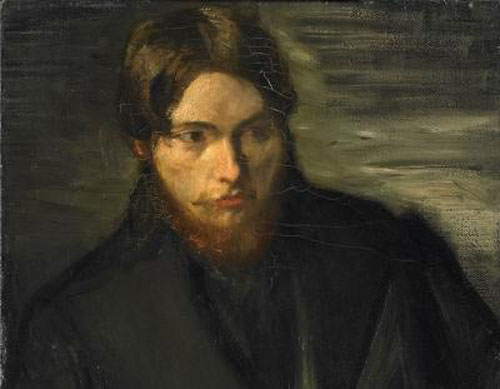|
THE
LAST BOHEMIAN : AUGUSTUS JOHN
Lady Lever Art Gallery, Port Sunlight. 18th May, 2021 to
30th August, 2021
Reviewed by Jim Burns
There was a time when Augustus John was seen as one of the leading
artists in Britain. He was also looked on as something of a bad boy
in terms of his personal behaviour. It went beyond the mere
flamboyant and gave him a reputation for sexual adventuring with
just about every lady he met. An anecdote says that, when walking
down the street where he lived, he always patted every child he
encountered on the head because he could well have been its father.
It strikes me that some of the reluctance to deal with him today may
stem from an understandable objection which frowns on women being
exploited by those who can exert some sort of control over them.
John’s status as an acclaimed painter, coupled with his personal
charisma, no doubt enabled him to turn on the charm to his
advantage.
But should his alleged failings as a person be allowed to affect our
admiration for his skills as an artist? I don’t think John was an
innovator, but he was a splendid draughtsman and an accomplished
painter. Henry Tonks, himself noted for his drawings, thought highly
of John’s work when he was a student at The Slade. And the examples
on show in the small, but satisfying exhibition at the Lady Lever
Art Gallery point to the confident way in which he sketched his
subjects and put something of their personalities into his
portraits. He perhaps extended this achievement even more in his
paintings, as for example one of the poet, Dylan Thomas, whose
seeming baby-faced innocence can’t hide the turbulence in his life
and poetry. It might be worth noting that Caitlin Thomas, as she
later became, had been one of John’s many lovers when she modelled
for him.
A major part of the exhibition revolves around the period when John
taught at the art school in Liverpool in the early-1900s. It was a
time when he extended his interest in the life-style of the Romani
people, or gypsies, as he referred to them. Their near-bohemian
wanderings no doubt appealed to his sensibilities. His own tendency
to gypsy-like proclivities may have been tempered at times by the
fact that he was married and his wife, Ida, gave birth to five sons.
She can be seen in the exhibition, as can Dorothy “Dorelia” McNeill,
John’s mistress in their ménage-à-troi, who had four
children by him.
There are portraits in the exhibition, and it was in this field that
John achieved his prominence. It’s said that he never flattered his
sitters, with the result that some of them were less than satisfied
with the finished product. And it may have been that his later work
fell short of his previous high standards. His biographer Michael
Holroyd, thinks so and comments on his heavy drinking, and a critic
said that “the painterly brilliance of his early work degenerated
into flashiness and bombast”.
The range of paintings and drawings on display in Port Sunlight
doesn’t allow us to generalise about a decline in John’s work over
the years. But it does provide evidence of how talented and
promising he must have seemed when he was younger. There is,
perhaps, some irony involved in that his sister, Gwen, who was
overshadowed by Augustus, has in recent years been re-discovered,
and is now possibly better-known than him. Her quiet, low-key
paintings seem to reflect the subdued personality seen in one or two
photographs in the exhibition.
But her brother understood that, while his work had
“technical mastery”, hers had “interior feeling and expressiveness”.
Augustus John’s bohemian capers are an obvious explanation of why he
was often in the news, but it’s his best work as an artist that we
should now pay more attention to.
|
